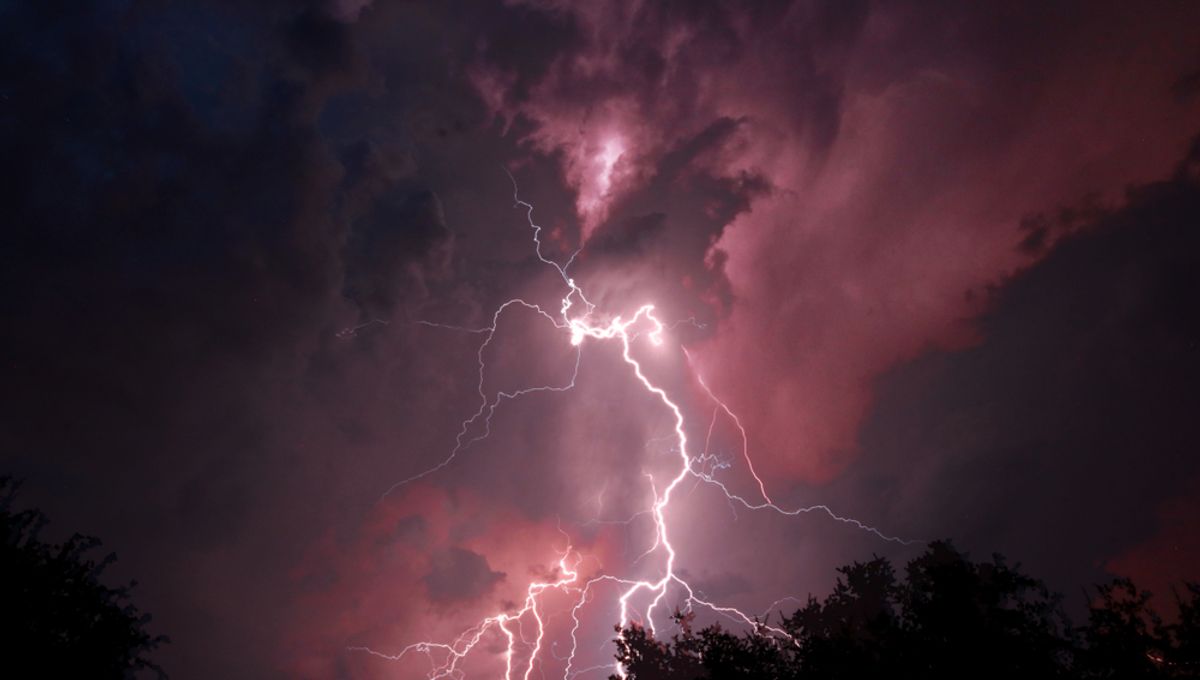
It‘s still debated whether lightning provided the energy needed to get life started. Either way, bolts were crucial to the emergence of life on Earth by converting nitrogen into a form the first living things could use. However, new research indicates this dependence didn’t last long; microbes evolved the capacity to break molecular nitrogen’s bonds and have been making most of it ever since. Besides what it tells us about our origins, the work could influence how we interpret nitrate deposits on Mars.
A nitrogen-rich atmosphere is one constant in Earth’s history. However, the N2 molecules in the atmosphere are unusable by most life on Earth, which needs bioavailable nitrogen to form proteins. Lightning breaks apart N2, forming oxides of nitrogen, which form nitrates and nitrites in water that organisms can process into more complex molecules.
Today, however, most of the bioavailable nitrogen comes either from ammonia produced by the Haber Process or from microbes that perform a similar role, particularly in nodules on the roots of certain plants. We know industrial nitrogen-fixing is little more than a century old, but the timing of the biological beginnings was unknown prior to a paper published this week.
Researchers filled flasks with water and gasses that replicate the Earth’s atmosphere at different stages of its history. After putting 50,000 volts through each, he measured nitric oxide, nitrite, and nitrate production. “Our results show that lightning can efficiently produce nitrogen oxides in the CO2-rich atmosphere that likely existed on early Earth,” the study’s first author, University of St. Andrews PhD student Patrick Barth, said in a statement. “This provides a potential source of nutrients for life at that time and on planets outside of our Solar System.”
This much was expected, despite previous reports the early atmosphere didn’t conduct lightning as well as it does today. After all, if organisms couldn’t have produced nitrogen before they existed, the fixed nitrogen used by the first life must have had a non-biological origin, and lightning is the obvious candidate.
However, the researchers then found something less predictable. The mix of nitrogen produced in this way didn’t match what we find in ancient rock deposits. The possible exceptions are those from Greenland’s Isua Greenstone Belt, which at nearly 3.8 billion years old are candidates for the planet’s oldest rocks.
Specifically, the ratio of nitrogen-15 to nitrogen-14 in the experiments’ products was lower than is found in 3.2-billion-year-old rocks.
Life forms preferentially process nitrogen-15 and the more recent – but still very ancient – deposits are much more consistent with having been produced by them than by lightning. The Isua Belt rocks were more ambiguous, but a potential match for lightning production. Study author Dr Eva Stüeken said that “This suggests that lightning may have supported the earliest life on Earth.”
By the time the slightly younger rocks the team studied were laid down, however, it seems microorganisms had taken over as the dominant nitrogen fixers. Like Prometheus in miniature, they demonstrated living things could do the job once reserved for the spark of heaven.
The team has gone to unusual lengths to bring their work to public attention. Besides making the paper open access, they contributed a science fiction story inspired by the research to an anthology where writers were paired with St Andrews researchers to create fiction about their work. Barth also has artwork in an exhibition of pieces based on atmospheric science.
The study is open access in the journal Nature Geoscience.
Source Link: Early Life Depended On Lightning, But Probably Not For Long